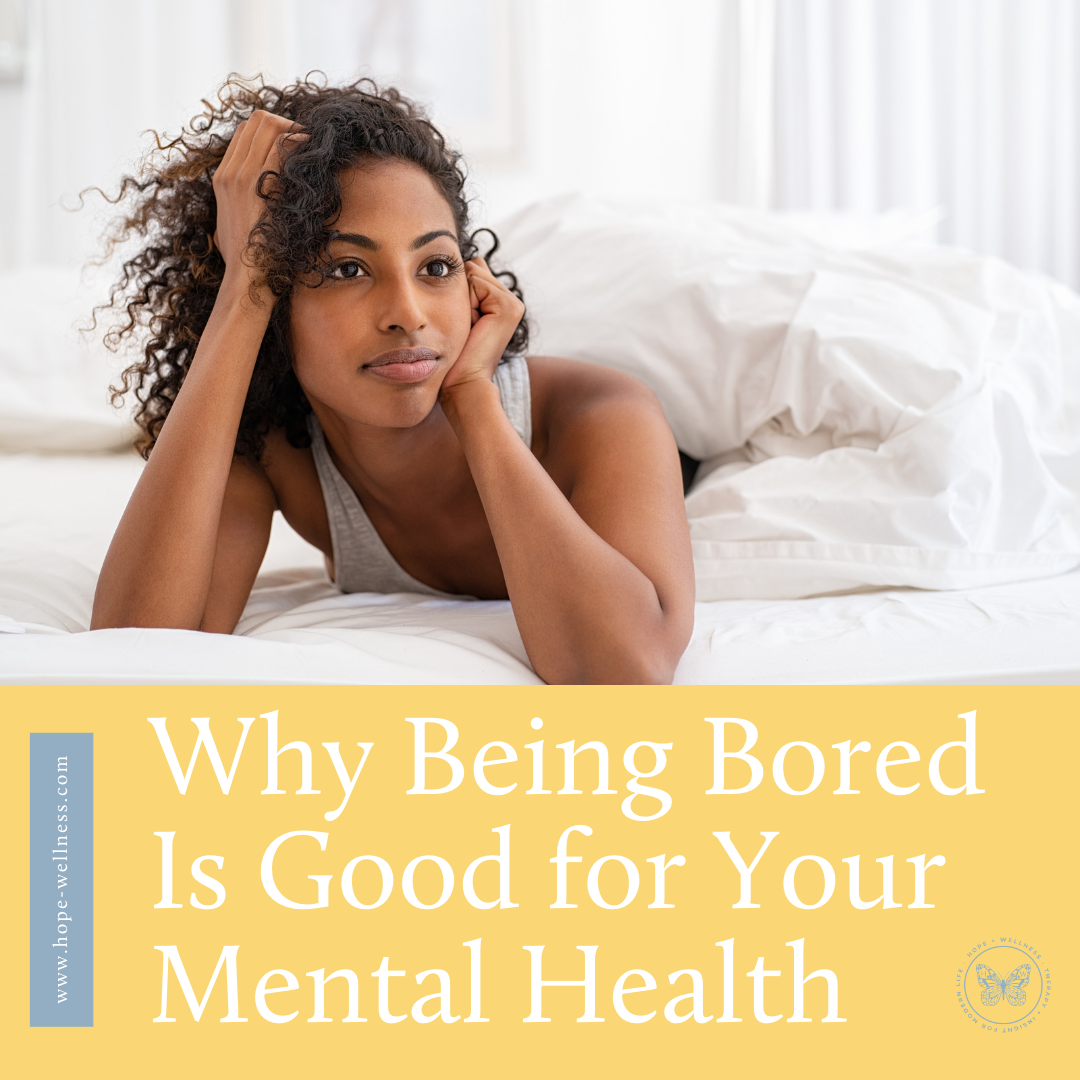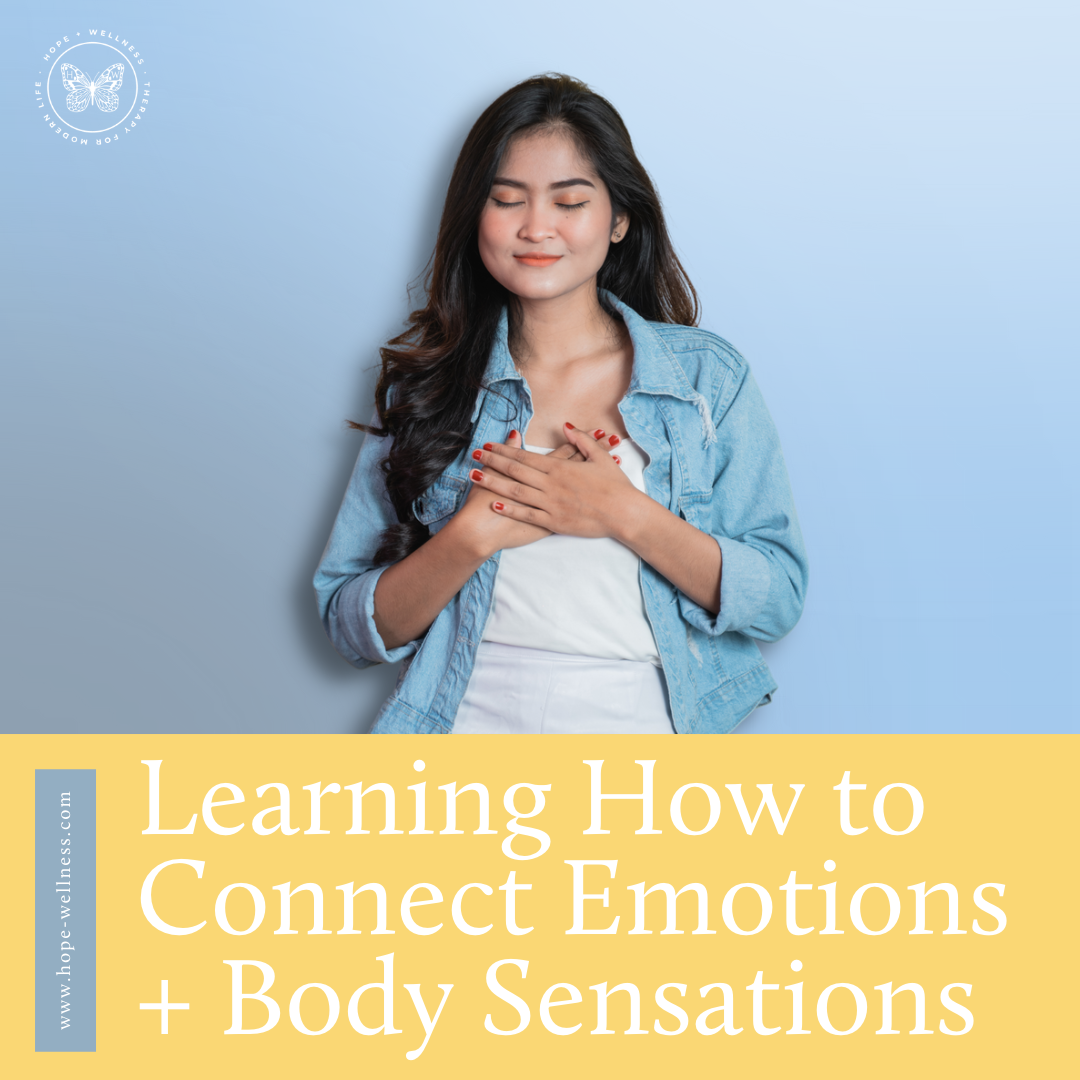
Hope +Wellness Blog
little snippets of advice for everyday challenges many people share

Dealing With Negative Emotions: 7 Blogs to read When You’re Feeling Something Uncomfortable
Dealing with distressing emotions in a healthy way takes practice. Learn where to start with these 7 posts about dealing with negative emotions.

3 Tips for Telling Your Therapist They Upset You
Maybe they poke at an old wound, maybe they misunderstand something difficult you’re struggling to communicate, maybe they’re reactivating old dynamics that hurt you in the past. No matter how it comes about, it’s possible–and in fact normal–that at some point, your therapist will say something that upsets you, rubs you the wrong way, or just generally hurts your feelings.

Why Being Bored Is Good for Your Mental Health
Boredom has a reputation for being a negative state of mind, but boredom actually has benefits for your mental health, like improving creativity, curiosity, and self-control.

5 Practices for When You Feel Off and Don't Know Why
Have you ever had one of those days where you’re just feeling off and you don’t know why? Here are five things to try when that happens.

6 Safe Ways to Express Anger
Part of the experience of an emotion is sitting through it - there’s really no way around experiencing the emotion if you want to move forward from it. Think of other emotions you feel. When you’re sad, you might cry, or cuddle a pet, or take a nap. Those are all safe ways to cope with sadness. There are options for you to express anger in safe ways too.

Exploring & Expressing Anger Safely
Anger is often a secondary emotion–which means if comes as a result of another, often more vulnerable feeling. While anger is what is being expressed in that case, the feeling at the root could be hurt, shame, betrayal, etc.
However, anger still tells us a lot of information, and isn’t an emotion to be afraid to feel or express

Learning How to Connect Emotions and Body Sensations
Emotions aren’t only felt in the mind. Our bodies react to our environments just like our brains do, and it can be helpful to connect emotions with body sensations so we can better understand what’s going on within us.

8 Blogs to Help You Manage Your Emotions
We’ve written pretty extensively on the blog about managing emotions and emotional regulation. Regulating your emotions shouldn’t have to be a big mystery. To make it as easy as possible to guide folks toward resources, we’ve put together a roundup of some of our blogs that are focused on naming, feeling, and managing emotions.

Understanding Your Window of Tolerance
One way to help understand what’s happening when your emotions feel out of control is through the window of tolerance model. We all have ranges, or windows, of what we’re able to tolerate psychologically. In some states of mind, we’re better able to cope and regulate our emotions than others.
Hope+Wellness is a mental health practice specializing in the treatment of depression, mood, stress, and anxiety in kids, teens, and adults. This is a blog about living well and finding meaning and purpose in the face of difficult challenges. This is a blog about finding hope.
Archive
- ACT
- ADHD
- Acceptance
- Anxiety
- Authenticity
- Belonging
- Bipolar
- CBT
- Calming
- Change
- Chronic Illness
- Chronic Pain
- Communication
- Community
- Coping Skills
- DBT
- Dating
- Depression
- EMDR
- Emotions
- Entrepreneurs
- Friendship
- Gratitude
- Grief
- Health Psychology
- Hope
- Inspiration
- Intimacy
- Intuition
- Joy
- Letting Go
- Love
- Manic Depression
- Mindfulness
- Miscarriage
- OCD
- Parenting
- Personal Growth
- Positive Vibes
- Quotes
- Relationships
- Resources
- Self-Compassion
- Self-Reflection
- Services
- Sleep
- Spirituality
- Stress Management
- Stress Relief
- Suffering
